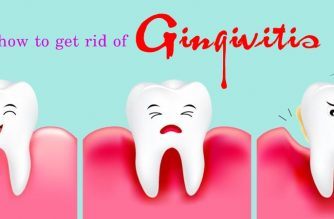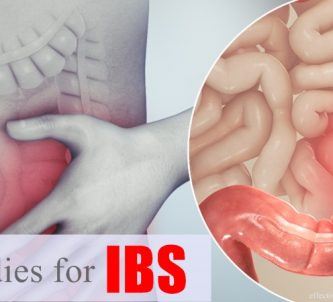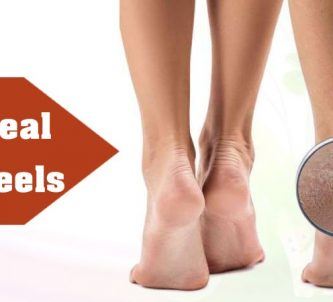Contents
Overview
Gingivitis is a kind of gum disease that annoys people at any age. It is not a fatal disease such as cancer, but it causes many uncomfortable feelings among the patients. Nowadays, more and more people are searching for natural remedies to treat gingivitis at home rather than going to the dentist to take a lot of medicine. And, if you are a patient of this gum problem, have a look at this article to know how to get rid of gingivitis in children, adults and pregnant women naturally and fast.
- Top 12 useful ways to prevent gingivitis from getting worse
- Top 9 natural solutions for gingivitis in toddlers and adults (This article was medically reviewed/fact checked by Millie Lytle, ND, MPH.
- 17 Best treatments for swollen gums
28 Best Ways To Get Rid Of Gingivitis In Children, Adults Or Pregnant Women
I. What Is Gingivitis?
Gingivitis happens when your gums are inflamed or infected. When the bacteria in your mouth are not cleared completely, they will build up and irritate your gums[1]. Also, if your mouth is at poor hygiene condition, it creates a suitable environment for the bacteria to develop and cause swelling and pain. Other health conditions and hormone imbalances also contribute to making your gums infectious and irritated.
Gingivitis is presented in different symptoms such as swollen or tender gums, bleeding gums, and even tooth loss if your gingivitis is so severe.
Besides its causes and symptoms, you should also pay attention to the risk factors following to prevent gingivitis:
- Cigarette smoking
- Stress
- Heart diseases, arthritis, and diabetes
- Obesity
- Unhealthy diet
- Pregnancy
- Weak immune system
- Poor hygiene condition
II. How To Get Rid Of Gingivitis In Children
1. Brush Teeth Regularly
Brushing teeth regularly can help to deal with gingivitis. According to Kids Health, it is best to brush after breakfast and before bedtime. When your children are under five years old, they do not have enough skills to brush their teeth by themselves, so parents have to help them. When they are older than five, they may do it by themselves. Remember to prepare your children soft and round-ended bristles and teach them to brush their teeth and gums gently.
2. Floss Once Per Day
Flossing is as important as brushing teeth. Regular flossing will help to remove the plaque on the gums and tooth surfaces. You should prepare an 18-inch piece and carefully put it between the teeth, move it up and down and slip it beneath the gums to remove the food particles. Remember to use a clean area of floss when driving to another tooth. Your children will be able to floss themselves when they are ten years old.
EffectiveRemedies Partner Solutions

Ask a Doctor Online and Get Answers in Minutes, Anytime!
Have medical questions? Keep asking questions to a Verified Expert until you get the answer you need.
3. Moisturize Your Children's Dry Mouth
Unfortunately, dry mouth can cause bleeding in the upper teeth. If your children breathe through their mouths when sleeping, they increase the risk of getting dry mouth. The saliva of a moist mouth will help to remove the bacteria that irritate their gums and cause bleeding; therefore, wear a thin layer of jelly for their lips and let them drink a cup of water before bedtime to keep their mouths moist.
4. Be A Good Model
When your little one reaches the age of 10, you don't need to help them brush their teeth anymore, but it is a must for you to be a model of proper dental care habits. According to the American Academy of Periodontology, parents should practise good oral habits to encourage their children in treating gingivitis. There is the fact that six in ten teenagers got this problem, so it is necessary for parents to present good habits so that their children can follow.
III. How To Get Rid Of Gingivitis In Adults
Like children, if you want to have robust oral health and treat gingivitis effectively, you have to brush and floss your teeth carefully. Also, you should pay attention to the following tips:
1. Choose The Right Toothpaste
If you have gingivitis, antibacterial toothpaste will help you to fight the problem. It can help you to remove plaque on your teeth, even a long time after you brush your teeth or floss. It also helps to remove the bacteria that irritate your gums and cause bleeding. Choosing the right toothpaste together with brushing and flossing your teeth regularly will help to treat gingivitis and periodontitis and bring you healthy gums.
2. Pay Attention To The Ways You Brush Your Teeth
You have to brush your teeth at least twice per day, two minutes per time to make sure that your teeth are cleaned effectively. Also, you can use an electric toothbrush instead of a manual one to clean your mouth thoroughly. Moreover, you need to focus on your gums as many bacteria may stay here. If you do not remove them quickly, they will harm your gums and worsen your gingivitis.
3. Choose Mouthwash With Antibacterial Properties
Your toothbrush cannot reach all of the places in your mouth, so using mouthwash is a useful way to remove the bacteria, which brushing cannot help. Mouthwash with antibacterial properties will be more effective in eliminating bacteria and taking care of your teeth.
4. Brush Teeth And Floss Every Day
Brush your teeth twice per day, after having breakfast and before going to sleep to protect your teeth. Flossing once per day will be a potent treatment for gingivitis. It helps to remove the leftover food and plaque on your tooth's surfaces. Therefore, flossing and brushing your teeth every day with antibacterial toothpaste to get rid of gingivitis and protect your oral health.
IV. How To Get Rid Of Gingivitis In Pregnant Women
1. Take Care Of Oral Health: Brushing And Flossing
Pregnant women should brush their teeth and floss regularly in the correct way. You should also brush your teeth after meals and snacks. Also, have dental care frequently (twice or thrice during pregnancy) to remove all of the plaque on your teeth and mouth, thereby reducing the risk of tooth bleeding and treating gingivitis effectively.
2. Pay Attention To The Diet
Do not eat junk food and reduce the amount of sugar intake. A nutritional diet is crucial for not only the development of your fetus but also your oral health[2]. With a less-sugar diet, the amount of plaque in gums and tooth surfaces will be minimized. Therefore, have a healthy diet plan to treat gingivitis and ensure your teeth's health.
3. Treat Tooth Decay Completely Before Pregnancy
You should try to have dental work done before pregnancy. Although some kinds of emergency procedures are safe when becoming pregnant; it is best to implement them before this process, especially for tooth decay, treat them completely before pregnancy to lower the risk of getting gingivitis during pregnancy.
4. Chew Gum
Pregnant women and other people are encouraged to chew gum about four times per day. Scientists pointed out that chewing xylitol gum can lower the risk of getting tooth decay[3]. Also, it helps to increase the saliva, keep the mouth moist, and balance the pH level in their mouths. Therefore, try to chew gum every day to reduce cavity growth and treat gingivitis effectively[4]
5. Consult A Dentist
Taking care of oral health is very important, especially for pregnant women. If it is necessary to consult a dentist before, during, and after pregnancy. Ongoing care is the most important thing. Also, go to see a dentist whenever you realize the symptoms of gingivitis.
V. Diet Plan For People With Gingivitis
Besides using mouthwash, flossing, brushing your teeth, etc., these following foods will help you on how to get rid of gingivitis effectively:
1. Omega-3 Fatty Acid
An omega-3 fatty acid is an essential substance for a healthy diet. It has anti-inflammatory properties, so it may help to treat gingivitis effectively[5] [6]. It is rich in foods such as macadamia nuts, sesame seeds, and pistachios. Consume more of the above foods; you will get rid of gingivitis faster.
2. Beef
Eating beef can also boost your recovery from gingivitis. Grass-fed beef, especially, is rich in collagen and omega-3 fatty acid. Also, grain-fed beef contains omega-6s, anti-inflammatory properties, and antibiotics. Therefore, eat beef more regularly when you get gingivitis to treat this problem quickly.
3. Chicken
Chicken is a rich source of CoQ10 and collagen, which may contribute to fighting gingivitis and other oral diseases[7]. Do not forget to eat the chicken skin because it contains collagen and is very useful in treating gum diseases.
4. Broccoli
Broccoli is rich in vitamin C, which is considered as an antioxidant in your body and is powerful at reducing gingivitis symptoms[8]. Also, broccoli provides you with magnesium, calcium, iron, and niacin, which are all beneficial to your health.
5. Bell Peppers
Bell peppers, both red and green, are rich in vitamin C, which is a great gingivitis treatment[9]. A cup of red bell peppers brings three hundred percent of vitamin C your body needs, while a cup of green bell pepper brings two hundred percent. It is even said to be richer in vitamin C than an orange. Therefore, consume more bell peppers to give enough vitamin C for the body.
6. Sweet Potato
Sweet potatoes contain beta-carotene, which is a crucial substance to fight gum disease[10]. It is also rich in vitamin C, B6, and manganese. Eating more sweet potatoes will help to reduce inflammation and treat gingivitis effectively.
7. Green Tea
Green tea contains catechins, which are listed in the vital nutrients to fight gingivitis[11]. It is said that drinking more green tea will reduce the risk of getting gum disease. It will help to protect not only your gums and teeth but also your overall health.
8. Shiitake Mushrooms
This type of food is rich in lentinan, which attacks the bacteria causing gingivitis. Shiitake mushroom also has anti-inflammatory properties so it may reduce the infection from gingivitis and help you feel better after only a short time of treating[12].
VI. Natural Home Remedies For Gingivitis
1. Aloe Vera
Aloe vera has antifungal and antibacterial properties so it can help to treat gingivitis effectively. It will prevent the formation of plaque in your tooth's surfaces and of course, address the bacteria which cause swelling and pain in your gums[13]. Also, using aloe vera is a good way to reduce the pain and soothe your gingivitis symptoms.
Directions:
- Cut an aloe vera leaf to extract the pulp
- Rub the pulp on gingivitis
- Wait for 10 minutes before gargling with cold water
- Do this remedy several times per day to soothe gingivitis quickly and effectively.
2. Turmeric
Curcumin in turmeric has antioxidant and anti-inflammatory properties so it can help to remove the plaque and treat the swelling and pain from gingivitis. Also, bacterial activity will be prevented. According to the Journal of Indian Society of Periodontology, using mouthwash with turmeric can help to prevent plaque formation and gingivitis[14].
Remedy 1: Turmeric And Salt
Directions:
- Mix 1 teaspoon of turmeric powder with 1/2 teaspoon of salt and 1/2 teaspoon of mustard oil
- Apply the above mixture to your teeth and gums
- Combine with massaging
- Gargle with cold water
- Repeat this remedy twice per day for the best result.
Remedy 2: Turmeric And Vitamin E
Directions:
- Mix 1/2 teaspoon of turmeric powder and a suitable amount of water
- Add to the above mixture a little bit vitamin E and mix them well
- Apply the above mixture to your gums
- After 10 minutes, wash it off with tepid water
- Repeat this remedy once per day until you feel the improvement.
3. Baking Soda
Baking soda is a great ingredient for gingivitis treatment. It can help to balance the acids in your mouth and treat tooth decay correctly. It further has antiseptic properties, so it is an excellent treatment for infection, swelling, and pain from gingivitis[15].
Directions:
- Combine 1/4 teaspoon of baking soda and a suitable amount of lukewarm water to make a thick paste
- Apply the above mixture to the affected gums
- Wash off with tepid water after 1 – 2 minutes
- Use this remedy twice or thrice per week to have the best result.
4. Lemon Juice
Lemon has antibacterial and anti-inflammatory properties, which are useful in treating gingivitis. It also has vitamin C, which can remove the infection and bring you strong gums. Besides, the acid from the lemon juice helps remove bacteria in your mouth, eliminate bad breath and prevent the formulation of plaque on your teeth and gums[16].
Remedy 1: Lemon Juice Mouthwash
Directions:
- Add two tablespoons of lemon juice to one cup of water
- Stir to mix them well
- Use this mixture as a mouthwash
- Repeat this remedy twice per day, after you brush your teeth
Remedy 2: Lemon Juice And Salt
Directions:
- Mix 1 tablespoon of salt with 3 tablespoons of lemon juice
- Apply the above mixture to your gums and teeth
- Wash it off after a couple of minutes with tepid water
- Do this remedy 4 or 5 times per day until you feel better.
5. Tea Tree Oil
The remedy with tea tree oil is considered to be one of the best treatments for chronic gingivitis. It has anti-inflammatory and antibiotic properties so it may help relieve the gingivitis symptoms very quickly[17]. It additionally helps to reduce irritation, pain, and bleeding gums. Here is how to use this oil for gingivitis removal:
Directions:
- Add 1 drop of tea tree oil to your daily toothpaste whenever you brush your teeth
- Wash your teeth as usual.
Note: Adding tea tree oil to your toothpaste is an excellent way to treat gingivitis. However, never eat tea tree oil directly as it can cause stomachache.
VII. How To Prevent Gingivitis From Reoccurring
Below are a few useful tips and tricks that you should follow to prevent gingivitis from recurring:
- Eat less sugar as it can create more plaque on your gums and tooth surfaces and keep away from processed and canned food.
- Eat more nutritional foods, especially which are rich in vitamins and minerals. They are often bone broth, fish, eggs, vegetables, meat, coconut oil and avocado.
- Take care of your mouth naturally, brush your teeth at least twice a day and daily floss
- Use alcohol-free mouthwash
- Have dental check twice per year
- Use a toothbrush in three to four months only (use an electric toothbrush if you can)
- Give up smoking as it can increase the risk of gingivitis. Even when you are treating gingivitis, smoking will decrease the effects of your treatment.
VIII. When To See Doctor
Most gingivitis symptoms can be treated at home. However, if you see the following ones, you have to go to the dentist as soon as possible or else, your gums and teeth will be damaged.
- Severe tooth pain
- Bad breath
- Bleeding gums
- Swollen or infectious gums
Above are the best methods on how to get rid of gingivitis in children, adults and pregnant women naturally and forcefully that you should follow. If you have any questions or other ways, you can leave your comment under this article. All content provided is for informational and educational purposes. We recommend you consult a healthcare professional to determine which method is appropriate to you.








